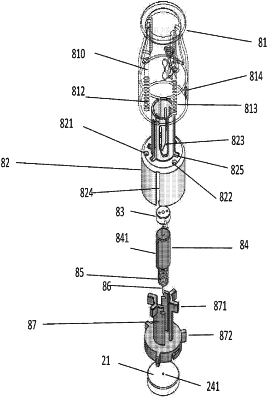| CPC A61B 5/14532 (2013.01) [A61B 5/0004 (2013.01); A61B 5/14865 (2013.01); A61B 5/6849 (2013.01); A61B 5/6848 (2013.01)] | 9 Claims |

|
1. A continuous analyte monitoring system for a subject, comprising:
1) a device including:
A) a transmitter containing a battery, a temperature sensor, and a processor, said transmitter configured for placement on top of a skin of the subject;
B) a transcutaneous flexible printed circuit board with dimensions to fit within a 16 gauge or smaller needle comprising a first metal layer configured to route electrical signals;
C) a monolithic semiconductor chip configured for placement beneath the skin of the subject and containing an electrochemical sensing element comprising a conductor configured to sense analyte concentration and generate an electrical signal representative of the analyte concentration and a temperature sensor;
wherein said monolithic semiconductor chip is electrically coupled to the transmitter via the flexible printed circuit board;
wherein the device is configured to i) determine a temperature gradient between the transmitter temperature sensor and monolithic semiconductor chip temperature sensor, ii) determine if insertion is successful based on the gradient, and iii) calibrate the electrical signal representative of the analyte concentration based upon a temperature measurement from the monolithic semiconductor chip temperature sensor; and
2) an applicator configured to apply the device on the skin comprising a plastic body, and a needle for accommodating the monolithic semiconductor chip and at least a part of the printed circuit board attached to the monolithic semiconductor chip.
|